I am new to programming and using R software, so I would really appreciate your feedback to the current problem that I am trying to solve.
So, I have to fit a cumulative distribution with some function (two/three parameter function). This seems to be pretty straight-forward task, but I've been buzzing around this now for some time.
Let me show you what are my variables:
x=c(0.01,0.011482,0.013183,0.015136,0.017378,0.019953,0.022909,0.026303,0.0302,0.034674,0.039811,0.045709,0.052481,0.060256,0.069183,0.079433,0.091201,0.104713,0.120226,0.138038,0.158489,0.18197,0.20893,0.239883,0.275423,0.316228,0.363078,0.416869,0.47863,0.549541,0.630957,0.724436,0.831764,0.954993,1.096478,1.258925,1.44544,1.659587,1.905461,2.187762,2.511886,2.884031,3.311311,3.801894,4.365158,5.011872,5.754399,6.606934,7.585776,8.709636,10,11.481536,13.182567,15.135612,17.378008,19.952623,22.908677,26.30268,30.199517,34.673685,39.810717,45.708819,52.480746,60.255959,69.183097,79.432823,91.201084,104.712855,120.226443,138.038426,158.489319,181.970086,208.929613,239.883292,275.42287,316.227766,363.078055,416.869383,478.630092,549.540874,630.957344,724.43596,831.763771,954.992586,1096.478196)
y=c(0,0,0,0,0,0,0,0,0,0,0,0,0,0,0,0,0,0,0,0,0,0,0,0,0,0,0,0,0,0,0,0.00044816,0.00127554,0.00221488,0.00324858,0.00438312,0.00559138,0.00686054,0.00817179,0.00950625,0.01085188,0.0122145,0.01362578,0.01514366,0.01684314,0.01880564,0.02109756,0.0237676,0.02683182,0.03030649,0.0342276,0.03874555,0.04418374,0.05119304,0.06076553,0.07437854,0.09380666,0.12115065,0.15836926,0.20712933,0.26822017,0.34131335,0.42465413,0.51503564,0.60810697,0.69886817,0.78237651,0.85461023,0.91287236,0.95616228,0.98569093,0.99869001,0.99999999,0.99999999,0.99999999,0.99999999,0.99999999,0.99999999,0.99999999,0.99999999,0.99999999,0.99999999,0.99999999,0.99999999,0.99999999)
This is the plot where I set up x-axis as log:

After some research, I have tried with Sigmoid function, as found on one of the posts (I can't add link since my reputation is not high enough). This is the code:
# sigmoid function definition
sigmoid = function(params, x) {
params[1] / (1 + exp(-params[2] * (x - params[3])))
}
# fitting code using nonlinear least square
fitmodel <- nls(y~a/(1 + exp(-b * (x-c))), start=list(a=1,b=.5,c=25))
# get the coefficients using the coef function
params=coef(fitmodel)
# asigning to y2 sigmoid function
y2 <- sigmoid(params,x)
# plotting y2 function
plot(y2,type="l")
# plotting data points
points(y)
This led me to some good fitting results (I don't know how to quantify this). But, when I look at the at the plot of Sigmuid fitting function I don't understand why is the S shape now happening in the range of x-values from 40 until 7 (looking at the S shape should be in x-values from 10 until 200).

Since I couldn't explain this behavior, I thought of trying Weibull equation for fitting, but so far I can't make the code running.
To sum up:
- Do you have any idea why is the Sigmoid giving me that weird fitting?
- Do you know any better two or three parameter equation for this fitting approach?
- How could I determine the goodness of fit? Something like r^2?
